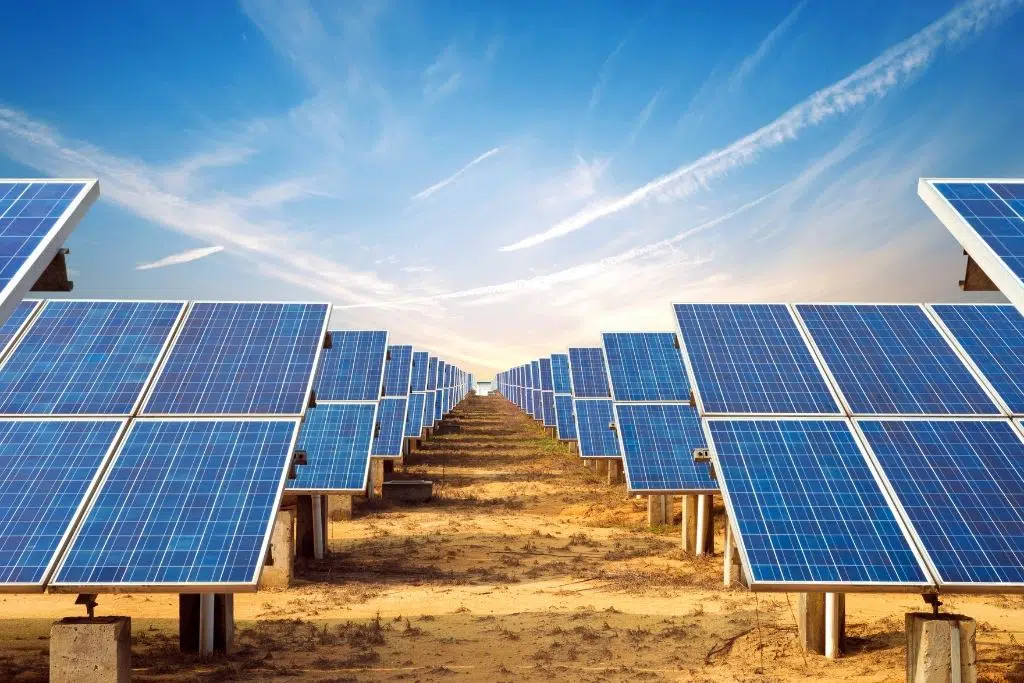174 petawatts (PW) of energy, in the form of solar radiation, hits our atmosphere. Almost one-third of this is reflected into space. The rest, 3,850,000 Exajoules (1EJ=1000000000000000000 J) every year, is absorbed by the atmosphere, clouds, oceans and land – one hour of insolation is the equivalent to more than the world’s energy consumption for an entire year. This quantification subtly emphasizes that harnessing solar panel technology is crucial for tapping into this vast and sustainable energy resource. Understanding how to build solar panels becomes paramount in unlocking the potential of solar energy for global consumption. Solar energy, derived from solar panels, stands out as the largest energy resource for the world.
Solar energy is an intermittent energy source
It is a disadvantage that all of the solar energy is not exploitable. Solar energy is an intermittent source, which means it isn’t available all the time. Sunlight reaches the earth 24/7, but due to Earth’s rotation, we have day and night at different locations. Some more facts:
- One year’s amount of solar energy reaching Earth’s surface is equal to all the non-renewable resources present on Earth.
- The solar energy the hits the Earth’s surface every second is equal to 4 trillion 100-watt light bulbs.
- The solar energy that hits one square mile in a year is equivalent to 4 million barrels of oil.
- Solar energy technologies have enormous potential to mitigate climate change by reducing energy-related emissions.
- The limited diffusion of solar technology in developing nations can be attributed to a wide range of factors such as driving policies, funding and Research and Development (R&D) activities.
How to Harness Solar Energy

Over the past few years, different researchers have found innovative and efficient ways to harness solar power. Some of the ways to harness solar energy are:
- Photovoltaic Systems: These panels are made of such materials, which, when exposed to sunlight, use heat to create an electric current.
- Solar water heating: These are usually rectangular chambers with multiple small tubes called flat-plate collectors, which circulate water or another fluid.
- STE (Solar thermal electricity): Solar energy can be concentrated to heat water and run turbines to produce clean- electricity.
- Solar heating and cooling: For offices and larger buildings, solar energy can be more efficiently harnessed, as compared to small premises or houses. On a larger scale, we can even use parabolic-trough collectors for space heating and solar water heating, instead of the traditional methods.
How to build your Solar panel?
Solar panels are quite expensive, and it isn’t possible for the mass market to buy them and get them installed in their homes. But it is quite possible to build your solar panel at a lower scale, and that could carry out the functions similar to that of a solar panel available in the market. Here are the steps which you need to perform for building a solar panel on your own.
Materials Required:
- Frame –preferably aluminium
- Recycled glass
- Solar cells
- Exterior glass silicon
- Tubbing wire
- Bus wire
- Diode
- Sylgard 184
- Flux
- Terminal block
- Standard wire No 12
- Silicon caulk
Read more: Tesla’s Solar Roofs: The Opportunities & Challenges
Procedure to Make Your Own Solar Panel
Assembling the pieces
- Buying the cells: The best cost-efficient cells are polycrystalline cells and can be easily bought off from websites like eBay, etc.
- Measure and cut a backing board: We need a thin board made out of non-conductive materials like glass, wood, plastic, to lay the cells on.
- Measure and cut all of your tubbing wire: In the polycrystalline cells, there are a large number of small lines going in one direction and two larger lines going in the other direction. We need to connect the wire to run down the more extensive lines and connect to the back of the next cell.
- Flux, solder, and connect: Apply flux on the areas that require a connection, so that they are safe from the heat of soldering. Now, heat one end of the tubbing wire and solder it to the cell.
Connecting the cells
- Glue the cells to the board
- Solder the cells together
- Connect the first-row using bus wire
Connect the end of the first row to the beginning of the second row.
Wiring the solar panel

- Connect the final bus wire to a diode
- Join all the other wires
- Attach the panel to a charge controller
- Connect the charge controller to the batteries
Solar energy was expensive on the commercial-scale until recent times. One of the easiest way to harness clean energy at low cost is with modern technology and manufacturing processes. Just make the connections, and experience the massive power of the Sun, for years to come!
Conclusion
In conclusion, solar energy emerges as a potent and abundant resource, contributing 174 petawatts of solar radiation annually. Despite its intermittent nature, innovative technologies like photovoltaic systems, solar water heating, and solar thermal electricity offer efficient ways to harness this vast energy source. Recognizing the hurdles in the widespread adoption of solar technology, there is a growing interest in building solar panels at a smaller scale. By following the provided steps and leveraging modern technology, harnessing clean energy from the sun becomes an accessible and affordable endeavor, allowing individuals to experience the benefits of solar power for years to come.
